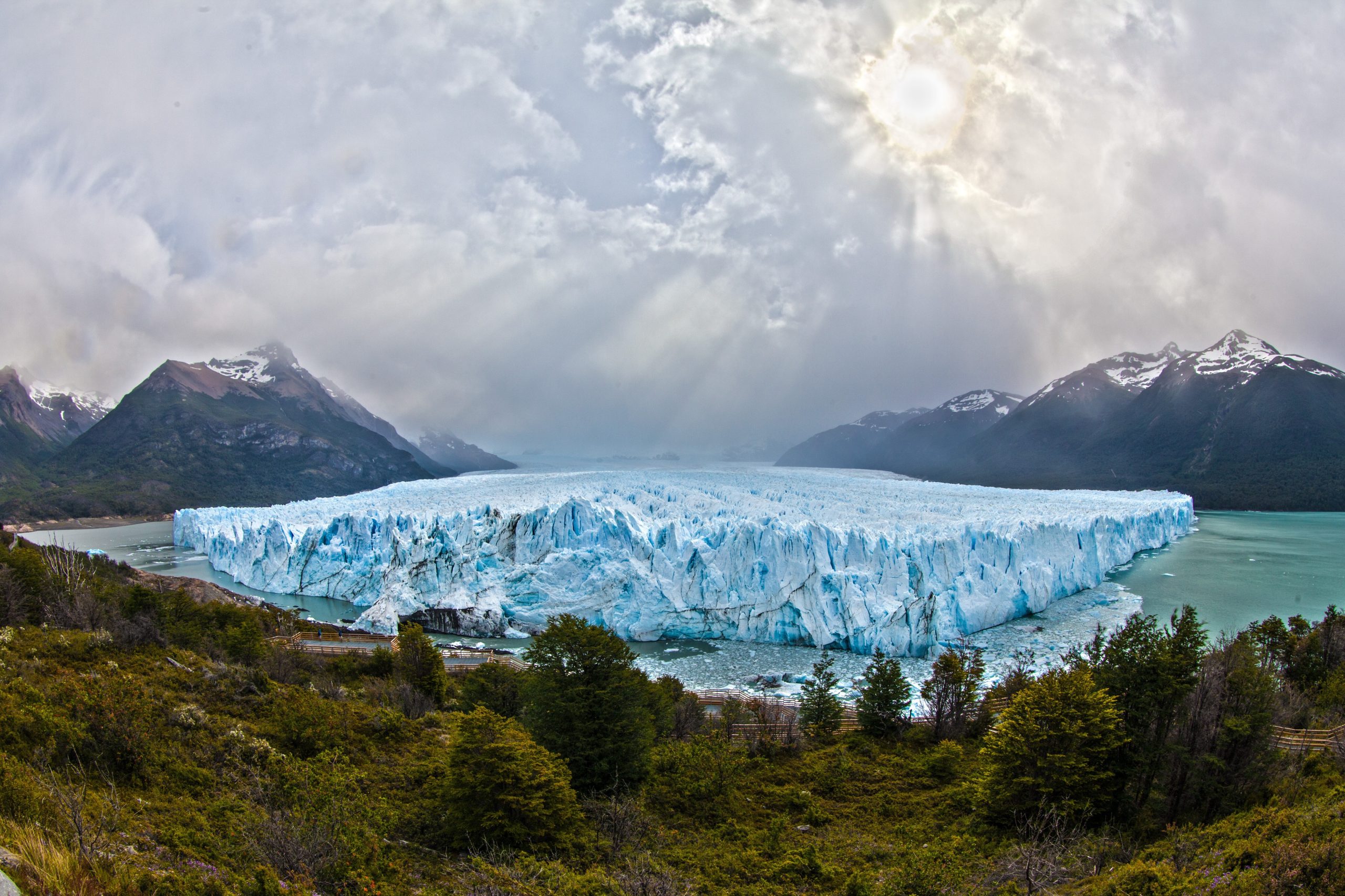This photo, taken Oct. 31 by NASA’s Terra satellite, shows the world’s largest iceberg, A-76A, in the Drake Passage near Antarctica. (Image credit: Lauren Dauphin/NASA Earth Observatory) (opens in new tab)
After slowly drifting around Antarctica for more than a year and barely melting, the world’s largest iceberg could soon be set on an accelerated course toward its eventual demise, a new satellite image reveals.
The gargantuan ice slab, known as A-76A, is around 84 miles (135 kilometers) long and 16 miles (26 km) wide. It is the largest fragment of the world’s previous biggest iceberg, the Rhode Island-size A-76, which broke off from the western side of Antarctica’s Ronne Ice Shelf in May 2021 and later fractured into three chunks: A-76A, A-76B and A-76C.
On Oct. 31, NASA’s Terra satellite captured a photo of A-76A floating in the mouth of the Drake Passage, a deep waterway that connects the Pacific and Atlantic oceans between Cape Horn in South Africa and the South Shetland Islands to the north of the Antarctic Peninsula. The image shows that the girthy berg is currently sitting between Elephant Island and the South Orkney Islands (both obscured by clouds in the image) at the southern end of the passage, but its trajectory hints that it will head further north into the waterway in the coming weeks. The image was released online Nov. 4 by NASA’s Earth Observatory (opens in new tab) .
Normally, when icebergs drift into the Drake Passage they are quickly dragged eastward by strong ocean currents, before being whipped northward into warmer waters, where they completely melt soon after, according to Earth Observatory.
Related: Arctic ‘ghost island’ that vanished may have actually been a dirty iceberg
To date, A-76A has traveled around 1,250 miles (2,000 km) since breaking off from the Antarctic Peninsula in 2021. The berg has managed to avoid substantial ice loss during its journey so far. Data collected by the U.S. National Ice Center in June revealed that A-76A is almost exactly the same size as it was when it fractured from its parent berg more than a year ago, according to Earth Observatory.
However, it is unlikely to remain intact much longer because the Drake Passage is renowned for sending icebergs on a one-way trip to their watery graves. The main reason for this is the Antarctic Circumpolar Current (ACC); it’s the only current that flows entirely around the globe, and it contains more water than any other current on Earth. The ACC, which runs from west to east through the Drake Passage, transports between 3,400 and 5,300 million cubic feet (95 and 150 million cubic meters) of water every second, according to Britannica (opens in new tab) . As a result, wandering bergs that enter the Drake Passage are swiftly dragged away from the Antarctic and dumped in warmer waters, where they soon melt away.
A-76A’s parent berg A-76 calving from the Ronne Ice Shelf in May 2021. (Image credit: ESA/Earth Observation) (opens in new tab)
The ACC is not the only ocean current that helps determine the fate of icebergs. Other smaller currents also play a key role in the distribution and eventual destruction of the wandering ice masses, but researchers are still trying to understand exactly how. RELATED STORIES—Antarctica’s doomed A68 iceberg dumped 1 trillion tons of water into the ocean over 3 years
—World’s largest iceberg disintegrates into ‘alphabet soup,’ NASA photo shows
—Massive iceberg narrowly avoided collision with Antarctic ice shelf
On Oct. 19, a study in the journal Science Advances revealed that another record-breaking berg, A68a, which held the title of the world’s largest iceberg for around three years, was ripped in half by powerful ocean currents after narrowly avoiding a potentially catastrophic collision with South Georgia Island in late 2020. At the time, researchers were surprised when the mighty berg suddenly fractured in the middle of the ocean. But the study revealed that a sudden shift in the direction and strength of nearby currents was to blame for the massive iceberg’s breakup.
It is currently unclear how long A-76A will remain in the Drake Passage, where it will end up, and how long it will survive once turbulent currents fling the ice mass northwards.
